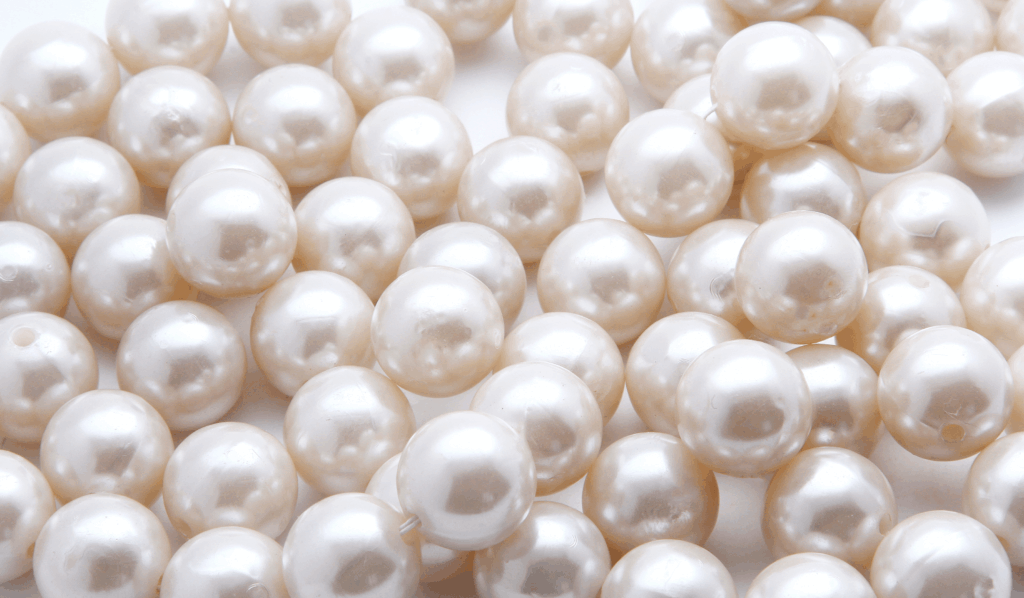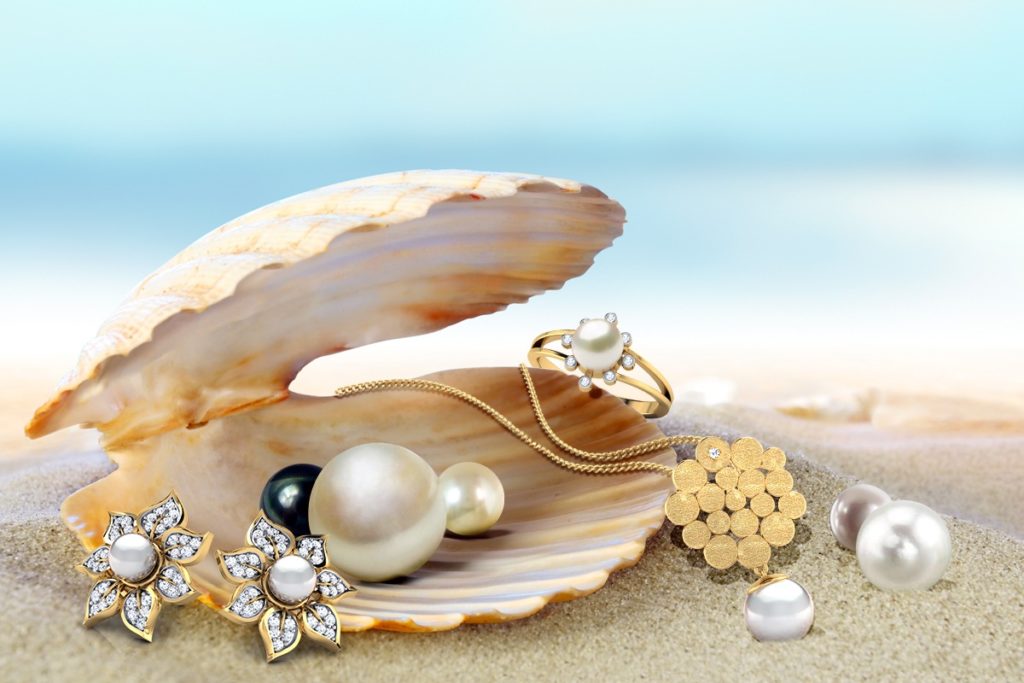Introduction
From the depths of the ocean to the height of royal power and now gracing everyday ensembles, the pearl has embarked on a fascinating journey. Unlike their gemstone counterparts, born of the earth’s fiery pressures, pearls are organic miracles, imbued with an ethereal glow that has captivated humanity for millennia. But their path hasn’t been a consistently luminous one. The rise and fall of pearl jewellery over the centuries tells a story of changing tastes, innovations, and cultural shifts. Join us as we delve into this captivating history, exploring how pearls have evolved into the modern fashion staple we know and love today.
Ancient Reverence: Pearls as Symbols of Status and Purity

Long before diamonds became a girl’s best friend, pearls reigned supreme. In ancient civilizations, these oceanic gems were more valuable than any stone. Egyptians were buried with them, believing they held magical properties. Romans associated pearls with wealth and prestige, Julius Caesar famously decreed that only the elite could wear them. Across the globe, from ancient China to the indigenous cultures of the Americas, pearls were revered for their natural beauty and rarity, symbolizing purity, wisdom, and even the tears of gods.
The allure was undeniable. Each pearl, unique in its shape and iridescence, was a treasure found through perilous dives, adding to its mystique and value. Royal families across Europe adorned themselves with elaborate pearl necklaces, earrings, and crowns, solidifying the pearl’s position as the ultimate symbol of status and power. Think of the iconic portraits of Queen Elizabeth I, her neck laden with ropes of shimmering pearls – a testament to her wealth and authority.
The Dawn of Cultivation: Democratizing the Pearl
For much of history, natural pearls were among the rarest and most coveted gemstones, available only to the elite due to their unpredictable and labor-intensive discovery process. Divers often risked their lives to retrieve oysters from the ocean floor, with no guarantee of finding a single pearl. This rarity gave pearls a mythical status and solidified their association with wealth, power, and divinity across various cultures.
The landscape began to shift dramatically in the late 19th and early 20th centuries, when pearl cultivation entered the scene. Though early attempts had been made in China and other parts of Asia, it was Japanese entrepreneur Mikimoto Kōkichi who revolutionized the industry. Through a methodical and scientific approach, he developed a reliable process for producing high-quality cultured pearls. By inserting a small bead nucleus and mantle tissue into oysters and carefully nurturing them in protected marine farms, Mikimoto achieved what was once considered nearly impossible: consistent, scalable pearl production.
This innovation democratized the pearl market. No longer limited to royalty or the ultra-wealthy, cultured pearls became accessible to the middle class and fashionable women around the world. The 1920s, in particular, marked a cultural milestone as the sleek, liberated aesthetics of the flapper era embraced pearls as a symbol of elegance and independence. Women layered long strands of pearls with their dropped-waist dresses and bobbed hair, making these once-luxurious gems part of the everyday wardrobe. Mikimoto’s success not only transformed the jewelry industry but also shifted societal perceptions of luxury and femininity in the modern age.
The Mid-Century Glamour and Beyond: Pearls as a Classic Staple
By the mid-20th century, pearls had firmly established themselves as a staple of timeless elegance. They were no longer just adornments but statements of grace and refinement. Cultural icons such as Audrey Hepburn, Grace Kelly, and Jackie Kennedy Onassis exemplified this aesthetic, often photographed wearing simple yet striking pearl pieces that became emblematic of their polished style. Hepburn’s iconic look in Breakfast at Tiffany’s, complete with a multi-strand pearl necklace, cemented pearls in the popular imagination as the epitome of chic sophistication. Similarly, Jackie Kennedy’s ever-present strand of pearls became as much a part of her signature look as her pillbox hats and tailored suits.
Pearls during this era were more than fashion—they were symbolic. A single strand worn by a bride on her wedding day, or gifted to mark a milestone, represented purity, poise, and tradition. People saw them as heirlooms, passing each piece from generation to generation, steeped in memory and sentiment.
Yet, as fashion evolved in the latter half of the 20th century, so too did the perception of pearls. The rise of bold, expressive fashion in the 1970s and 1980s brought colorful gemstones and experimental designs into the spotlight. Casualwear became more dominant, and the structured, conservative elegance associated with pearls began to feel out of step with the new fashion sensibilities. Pearls were still respected and cherished, but they were often reserved for formal events, weddings, or older generations. Despite this dip in everyday popularity, pearls maintained their reputation as classics—timeless but temporarily sidelined by changing trends.
The Modern Renaissance: Pearls Reimagined
But the story of the pearl doesn’t end there. In recent years, we’ve witnessed a vibrant resurgence of pearl jewelry, albeit with a contemporary twist. Designers are reimagining pearls in exciting new ways, moving beyond the classic single strand. We’re seeing:
- Deconstructed Pearls: Asymmetrical designs, single statement earrings, and scattered pearl embellishments.
- Mixed Metals and Materials: Pairing pearls with edgy chains, leather, and other unexpected materials.
- Baroque and Keshi Pearls: Embracing the unique, organic shapes of non-spherical pearls for a more artistic and individualistic look.
- Pearls for Everyone: Men are increasingly incorporating pearls into their style, challenging traditional gender norms in jewelry.
People today no longer see pearls as solely demure or traditional. They are versatile, adaptable, and effortlessly chic, finding their place in everything from streetwear to high fashion. Whether it’s a delicate pearl pendant, a bold pearl-encrusted ring, or a playful mix of pearls and other beads, this oceanic gem continues to captivate and evolve.
From ancient reverence to modern reinvention, the journey of pearl jewelry is a testament to its enduring beauty and adaptability. While their perceived status may have shifted throughout history, their inherent elegance and timeless appeal ensure that pearls will continue to shimmer and inspire for generations to come.
Also Read: When Should You Get Your Jewellery Re-Polished or Resized?
Conclusion
From ancient symbols of wealth and power to their widespread availability through cultivation, pearls have consistently adapted to the changing tides of fashion. Their journey isn’t a simple rise and fall but a continuous evolution, proving their enduring appeal. Designers and wearers today embrace pearls in versatile, bold, and modern styles, no longer confining them to a single look or demographic. Ultimately, the pearl’s story is a testament to its timeless elegance, ensuring that this natural wonder will continue to shimmer and inspire generations to come.

